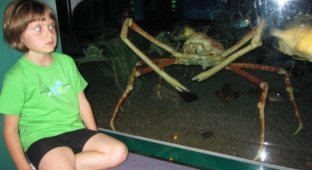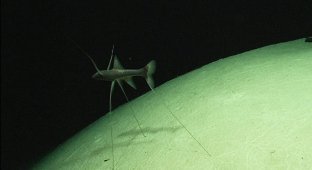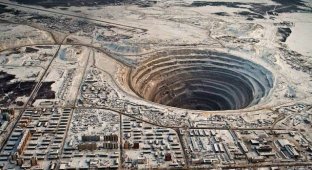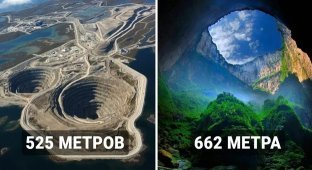Is there a real chance that giant animals live in the deep? (11 photos)
Bottomless depths stir the imagination. Nessie, Cthulhu, the Kraken—how many tales and legends have humanity dreamed up over centuries of seafaring? But what if all these stories have a real scientific explanation? What if giant monsters really do live in the pitch-black depths of the deep? We invite you to dive into the realm of eternal night. We invite you to the bottom!
It's a good thing this is just a scary image, right? 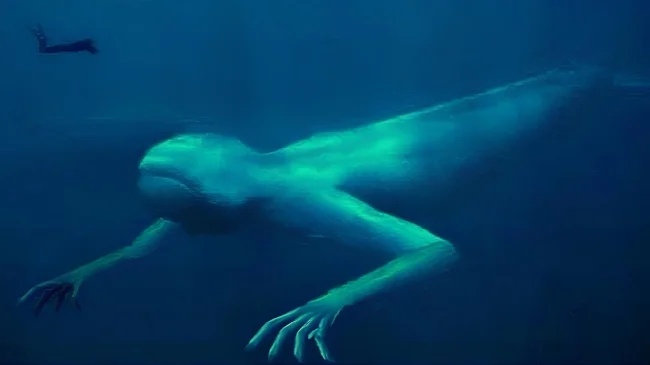
So, the depth is 300 meters. The twilight zone—rays of sunlight still pierce the surface of the water, and it's still far from pitch black. But even here, familiar sea creatures take on surreal forms. The Japanese spider crab is the largest arthropod on the planet. Its leg span can reach up to 3 meters!
Imagine how many people it could hug with those paws. 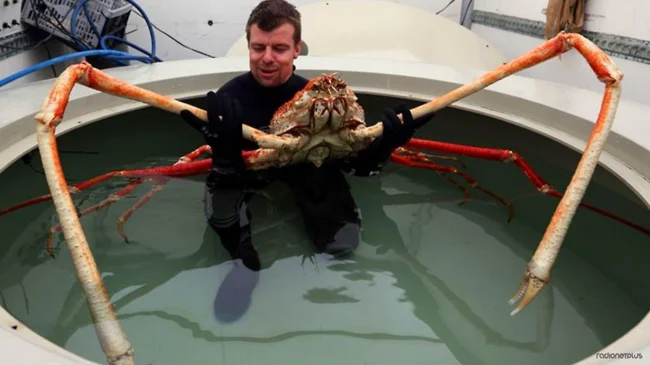
We descend even deeper. The depth is 1,000 meters. In the viscous darkness, a giant squid, its tentacles stretched 13 meters, swims past. It's the largest mollusc on the planet! Also swimming by, like a leviathan serpent, is the oarfish. This fish, whose body length ranges from 3 to 7 meters!
Photographing a giant squid is a true feat. These deep-sea monsters very rarely rise to the surface. 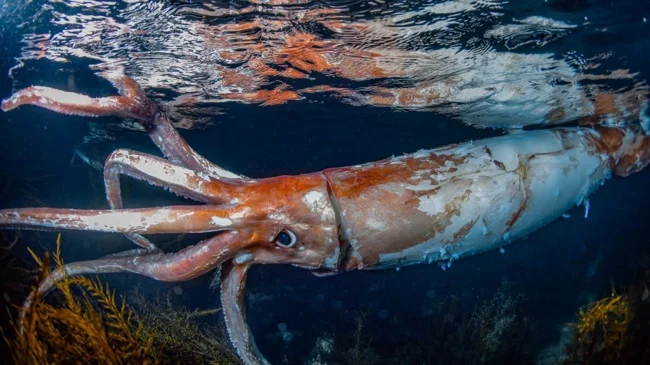
Depths range from 3,000 to 6,000 meters. Complex life is almost nonexistent here. At least, that's what it seems at first glance. Look beneath your feet, at the bottom. Giant isopods and deep-sea amphipods scurry about here. Their surface relatives grow no more than a couple of centimeters. But beneath the surface of the water, their bodies transform: the largest crustaceans are comparable in size to a cat!
Isopods spend their entire lives filtering the ocean floor in search of any food they can find. 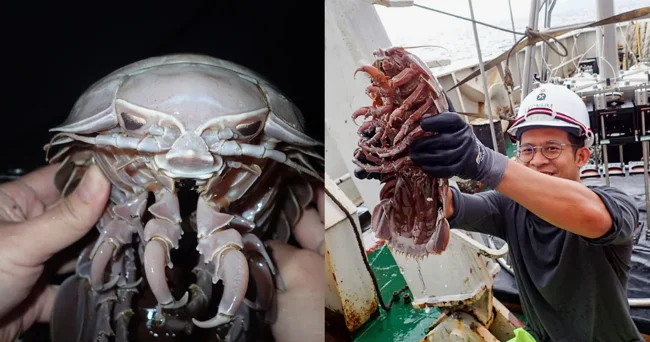
What's wrong with all of them? That's all true, gentlemen, it's simply a reaction to external conditions. There are at least three reasons for these animals to swell to alarming sizes in the depths.
First, these denizens of the dark are trying to keep warm. On the seafloor, the water is consistently cold—its temperature is close to freezing. According to Bergmann's Rule: the larger your body size, the better you retain heat. To understand how this works, pour boiling water into two cups: one larger, one smaller. And see which one cools faster.
The same rule applies in polar latitudes on land: polar bears, emperor penguins, snowy owls. These animals are the largest representatives of their families! And they all inhabit extreme latitudes. 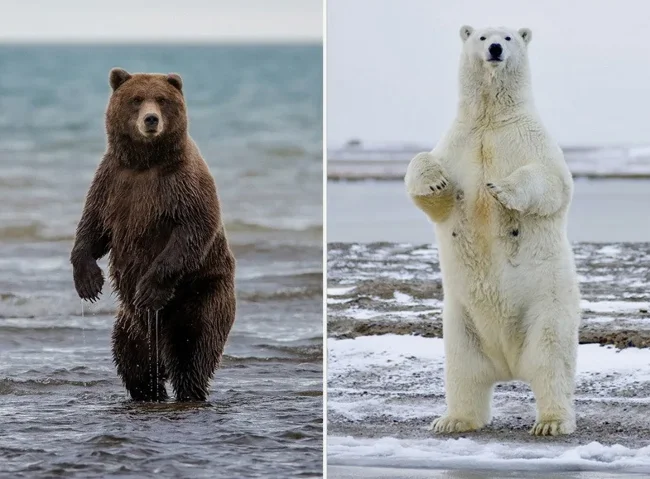
The second reason is food shortage. Yes, I know, it sounds paradoxical. But the logic is this: in the deep sea, food is scarce and rare. This means that finding something for dinner requires a tremendous amount of time and effort. A large organism has more resources than a small one. This means it can expend energy walking hundreds of meters in search of food. Meanwhile, the tiny animal's "engine" runs the risk of dying before it finds anything edible.
It's a shame you can't find shrimp like these in the store! 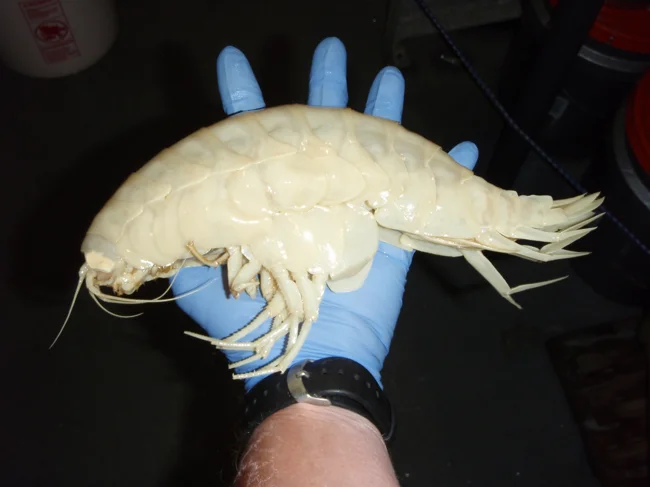
The third reason is safety. The larger you are, the harder it is to eat you. For example, surface amphipods become food for every first one. Meanwhile, the natural enemies of deep-sea amphipods can be counted on the fingers of one hand. 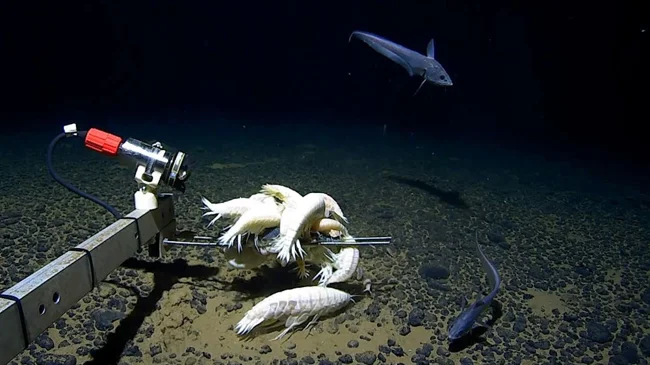
However, where there are possibilities, there are also limitations. You've probably noticed that the vast majority of giant inhabitants are invertebrates. The list doesn't include those creepy-faced monster fish that scare people online. Why are these monsters so unlucky in size? They live at the same depths as the titans of the abyss!
Most of the creepy fish you've seen photos of are the size of your palm! 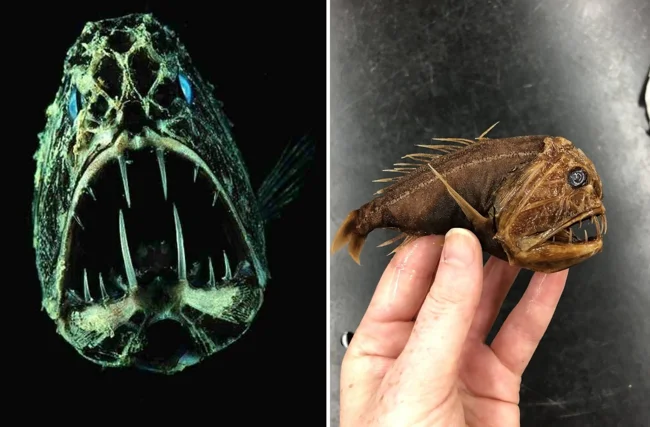
And this one is shorter than a shoelace! 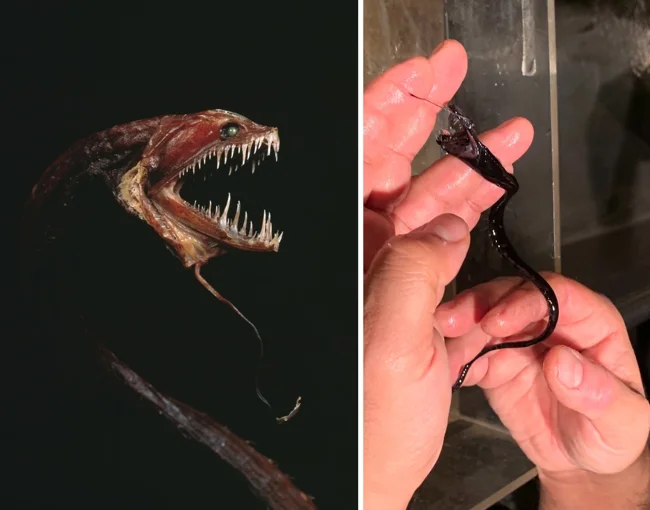
The fact is that invertebrates are simpler than vertebrates. They don't need to worry about slowing their metabolism, adjusting buoyancy to stay at the right depth, or tinkering with their blood formula to efficiently absorb oxygen. Their energy requirements are minimal, and they passively obtain breathing gas from the environment.
— Hey, isopod, did someone just call you primitive in an article? — Really? I didn't get it! 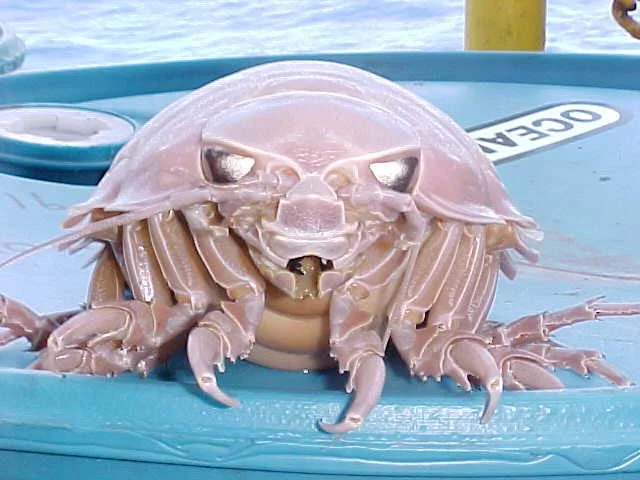
Furthermore, the anomalously gigantic animals of the deep are mostly scavengers. Their diet consists of organic particles and the bodies of upper-ocean dwellers that have sunk to the bottom. Meanwhile, anglerfish, chauliods, and other terrifying denizens of the abyss feed exclusively on fresh produce. To lure anyone to them, they use all sorts of tricks: retractable jaws, fishing rods, glowing body parts. Every catch is a great success for a deep-sea predator. They can survive for several months without prey!
Many deep-sea creatures have mouths or stomachs that stretch enough to accommodate prey as large as the hunter themselves. 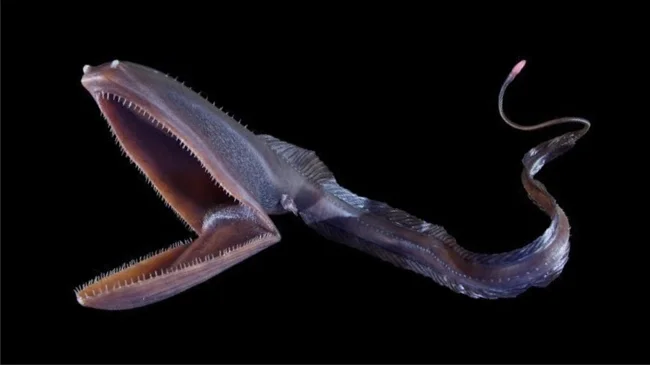
So, tales of ocean giants are not just tales. Titanic creatures really do live thousands of meters below the surface. But they are all harmless and harmless to humans. And you definitely won't find a megalodon in the Mariana Trench!
This has been the Book of Animals!












